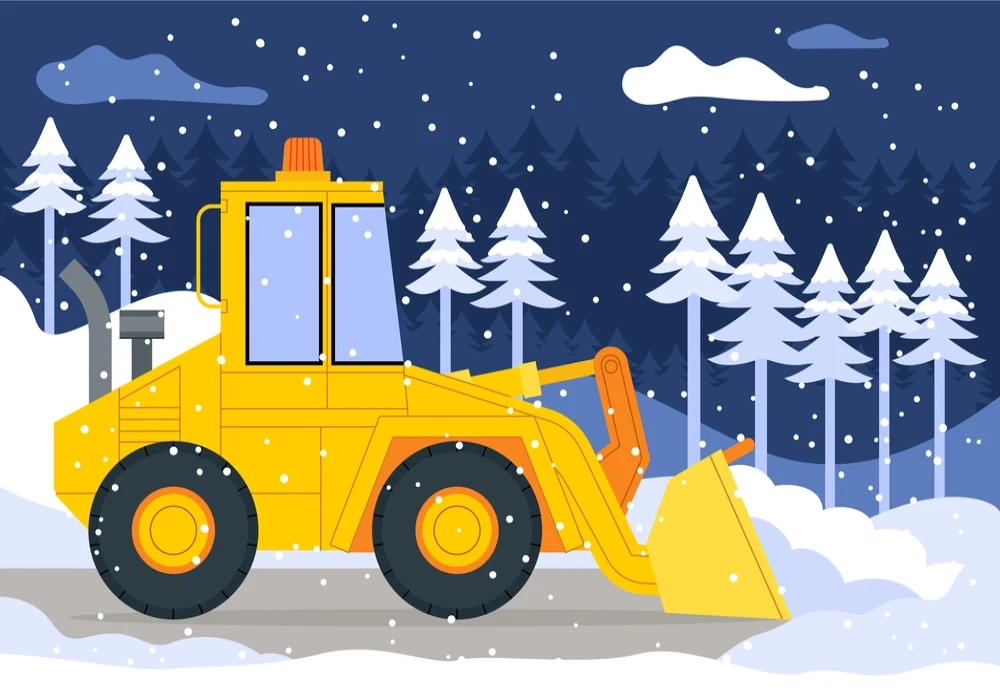
Using JCBs in snowy mountain areas during landslides can be challenging. Safety is the top priority, as conditions can change quickly.
This helpful article by the experts of a JCB parts dealer in Palwal shares tips to help you operate JCBs safely and effectively in these tough environments.
Assess the Terrain
- Look at the ground before using the JCB.
- Check for soft spots or areas that might slide.
- Identify places where snow or rocks could fall.
- Watch for trees or other objects that might fall.
- Understand how steep the slope is.
- Keep an eye on weather changes.
- Look for signs of past landslides.
- Avoid working near unstable edges.
- Make a plan to keep safe.
- Always be ready to move if the ground shifts.
Use Appropriate Equipment
- Choose the right JCB for snowy areas.
- Look for models with wide tracks or tires.
- Wider tires help with grip on snow and ice.
- Check if the JCB has good traction features.
- Use machines designed for rough terrain.
- Ensure the equipment is strong enough for the job.
- Consider snow plows or blades if needed.
- Make sure all attachments are secure.
- Test the equipment in safe areas first.
- Using the right equipment keeps everyone safe.
Inspect the Machinery
- Check the JCB before you start working.
- Look at the brakes to make sure they work well.
- Check the tracks or tires for damage.
- Make sure the hydraulic systems are functioning.
- Inspect the lights for visibility in bad weather.
- Look for leaks in the engine or fuel lines.
- Ensure the bucket or blade is secure.
- Check fluid levels like oil and coolant.
- Report any problems to a supervisor.
- A well-maintained JCB is safer to operate.
Prioritize Safety Gear
- Always wear safety gear when operating the JCB.
- Use a hard hat to protect your head.
- Wear gloves to keep your hands warm and safe.
- Insulated clothing helps you stay warm in cold weather.
- Use safety boots with good grip for icy ground.
- Consider wearing goggles to protect your eyes.
- Reflective vests can help others see you.
- Check your gear before each shift.
- Replace any damaged or worn-out equipment.
- Good safety gear keeps you safe on the job.
Maintain Low Speeds
- Always drive the JCB at slow speeds.
- Slow speeds give you better control of the machine.
- It helps prevent slipping on ice or snow.
- You can react quickly to changes in the terrain.
- Driving slowly reduces the risk of accidents.
- It allows you to avoid obstacles more easily.
- Slow speeds help protect the equipment from damage.
- Always keep a safe distance from other workers.
- Pay attention to the ground while moving.
- Safety is more important than speed.
Use Anti-Skid Measures
- Consider using chains on the tires.
- Chains help improve grip on snow and ice.
- Check that the chains are tight and secure.
- Use anti-skid mats for extra traction if needed.
- Test the equipment on a safe surface first.
- Avoid sudden turns or stops to prevent slipping.
- Regularly inspect the chains for wear and damage.
- Keep extra chains on hand in case of breakage.
- Remove chains when not needed to prevent damage.
- Good traction helps keep you safe while working.
Stay Alert for Falling Debris
- Always be aware of your surroundings.
- Watch for rocks or snow that might fall.
- Look up at the slopes while working.
- Stay clear of unstable areas and edges.
- Listen for sounds that indicate falling debris.
- Always keep your escape route in mind.
- Work in teams so you can watch each other.
- Stop working if conditions become dangerous.
- Report any signs of potential danger to a supervisor.
Avoid Sudden Movements
- Make smooth and gentle movements with the JCB.
- Avoid quick turns or sharp stops.
- Sudden actions can cause the machine to slip.
- Always plan your movements before acting.
- Move the bucket or blade slowly and carefully.
- Pay attention to the ground conditions as you work.
- Check for obstacles before changing direction.
- Stay calm and focused while operating the machine.
- Communicate with others if you need to move.
Utilize Proper Techniques for Clearing Debris
- Use the bucket or blade to push debris safely.
- Start from the edge and move inward to avoid slides.
- Keep the machine on stable ground while working.
- Avoid piling debris near unstable slopes.
- Use slow and steady movements when clearing.
- Monitor the area for changes in stability.
- Don’t overload the bucket; keep it balanced.
- Work in teams to ensure safety and efficiency.
- Clear a safe path for others if needed.
Regularly Monitor Weather Conditions
- As per JCB excavators dealer, always check the weather before starting work.
- Watch for changes in temperature or snow levels.
- Be aware of strong winds or heavy snowfall.
- If conditions worsen, be ready to stop work.
- Listen to weather reports for warnings.
- Avoid working during storms or bad weather.
- Keep in touch with your team about weather updates.
- Plan tasks around the weather for safety.
- Know when to wait for better conditions.

 (1)_500_x_350.webp)
 (1)_500_x_350.webp)
 (1)_500_x_350.webp)






